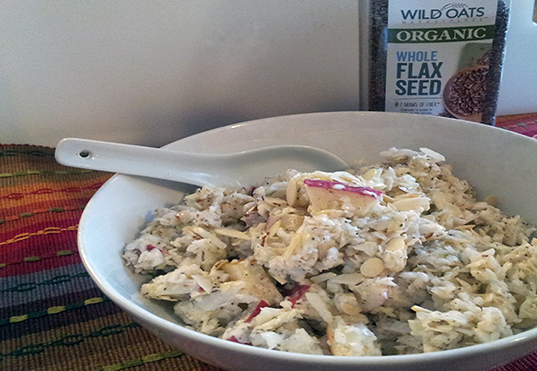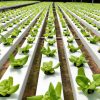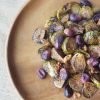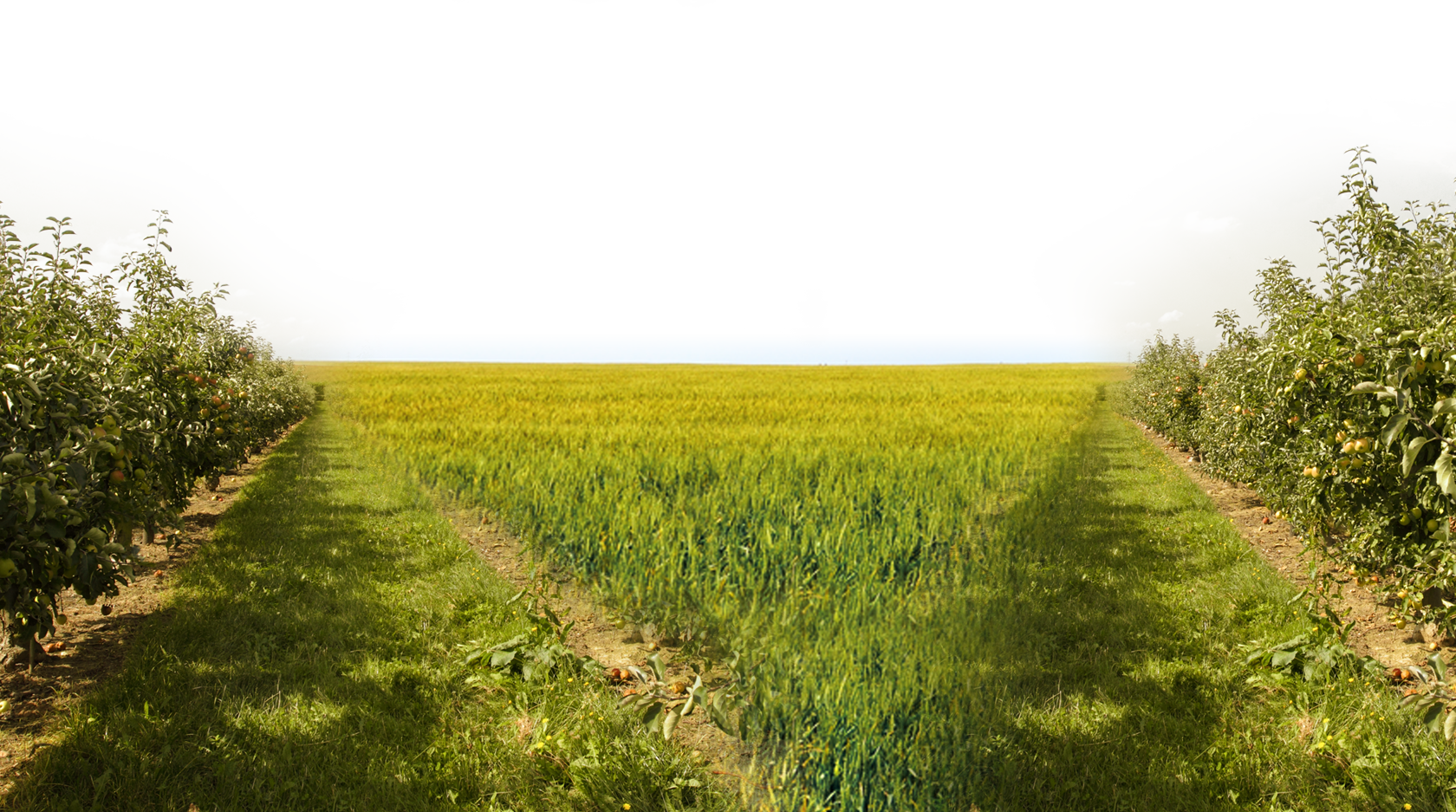
Why you never want to buy coleslaw again!
By Linda Bonvie | 0 Comments | Posted 06/16/2015
Read to the bottom for my super apple, almond coleslaw recipe!
So what’s wrong with coleslaw, you might ask? Isn’t it supposed to be, like, good for you?
Well, yes – but the problem is, by the time you buy it in ready-made form, it’s likely to have lost a lot of its “goodness.”
That’s because coleslaw primarily consists of chopped cabbage, which rapidly loses much of its vitamin C content once it’s been cut. So when you buy it premade, you’re cheating yourself out of one of its major benefits – and paying a lot more than you need to in the bargain.
So if coleslaw is what you crave, you’re far better off making it yourself, just prior to serving. And it’s not all that hard (recipe alert!) when you’ve got a good, crisp head of cabbage. And the best way to keep that cabbage crisp and with its nutritional value intact is to keep it chilled and wrapped in plastic until ready for use.
And there’s a lot of nutritional value that’s worth preserving in this cruciferous veggie. In addition to the vitamin C, cabbage is rich in vitamin K, which is both a boon to bone health (and a natural way of keeping osteoporosis at bay) and a brain booster as well, which may help prevent dementia, according to a recent study of the relationship between diet and cognitive ability in seniors. Other important vitamins contained in cabbage include thiamin (vitamin B-1) pantothenic acid (vitamin B-5), and pyridoxine (vitamin B-6).
Cabbage is also a great source of the essential minerals manganese, which helps to keep your brain, nerves and muscles coordinated; potassium, which helps control your blood pressure and heart rate; iron, which is crucial in forming red blood cells, and magnesium, which helps the body perform various functions, including muscle contraction and relaxation.
Then there are the polyphenols this leafy powerhouse contains, antioxidants that, taken together with vitamin C, provide anti-cancer and anti-inflammatory properties, as well as glucosinolates, which are considered to be important preventives for a variety of cancers. In addition, this blend of nutrients makes cabbage extremely beneficial to both gastrointestinal and cardiovascular health.
Cabbages also come in several different varieties – including colorful ones like red and purple, savoy, bok choy, or Chinese cabbage, and Napa. But for coleslaw, the type usually used is the common green cabbage.
Try the recipe below, and I’ll bet you won’t be standing in the deli line at your supermarket to buy coleslaw ever again!
Super apple, almond coleslaw recipe
Ingredients:
- ½ head of a medium-size cabbage
- 1 organic apple
- 1/3 to half cup mayo
- 1/3 cup sliced almonds
- 2 tablespoons Wild Oats organic flax seed (ground or whole that’s been ground to order)
- 2 tablespoons apple cider vinegar
- 1 teaspoon celery seed
- ¼ teaspoon ground sea salt
- ¼ teaspoon ground black pepper
Core and slice the apple wedges into bite-size pieces (leave the skin on). Place your cut apple pieces in a bowl and sprinkle the vinegar over them. This will keep the apples from turning brown.
Chop the cabbage in a food processor. (Note: Cabbage processes very quickly, so don’t over-chop it. Also, it’s best to chop cabbage in several steps instead of putting it all in the food processor at once. When you do that, the bottom gets over-cut and the top will still be in big chunks.)
Put your chopped cabbage into a large bowl and add the mayo. Toss to blend.
Add the rest of the ingredients (don’t forget the apples!)
Toss until well blended and serve immediately.
Serves 6 to 8.
Enjoy!


 Contact us
Contact us



























